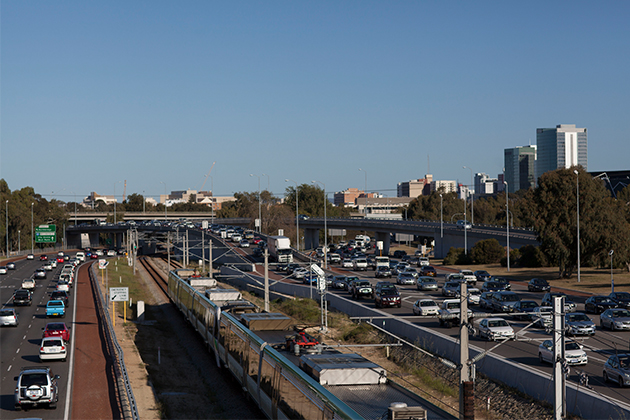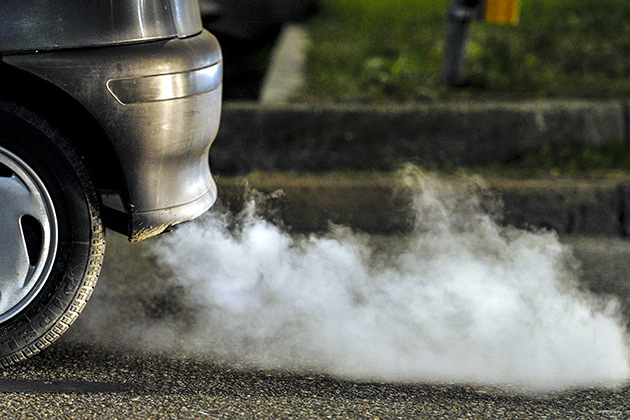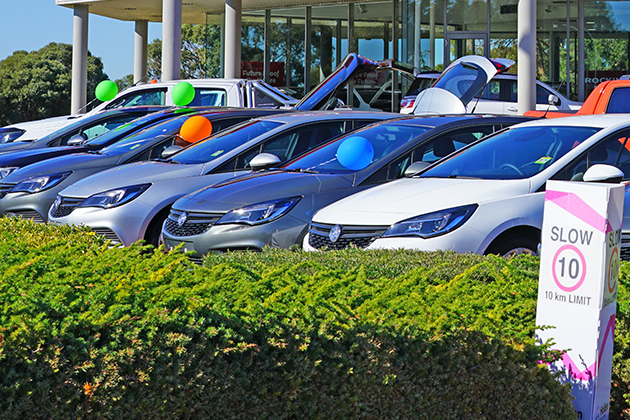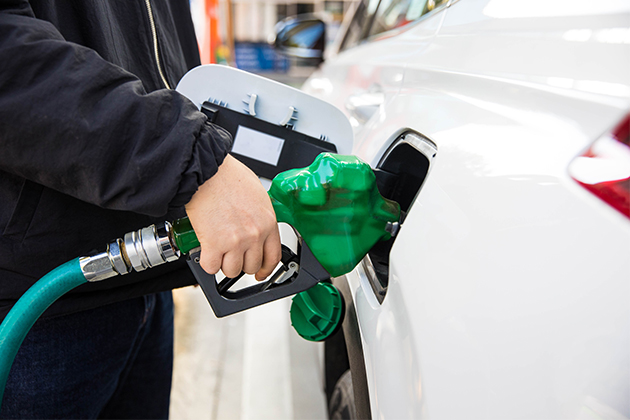23 February, 2021 By: Ruth Callaghan
It may be invisible, but the cocktail of vehicle emissions circulating around Perth’s clear blue skies could be having very real health impacts.
When the first wave of COVID-19 lockdowns swept the globe in early 2020, the roads emptied, and skies cleared.
It was a rare silver lining amid the stream of bad news and demonstrated just how great the impact of daily traffic can be on the quality of our air.
Researchers looking at the air quality of more than 27 countries found remarkable falls in pollution, including in some of the pollutants known to have the greatest impact on human health.
RELATED:
Australia's poor vehicle emissions standards »
Ground-level nitrogen dioxide fell nearly 30 per cent, according to a study of more than 10,000 air quality stations by the George Washington University Milken Institute School of Public Health. This represented a significant reduction in a pollutant linked to more than 4 million cases of asthma in children each year worldwide.
Measurements of ground-level ozone and fine particulate matter (PM2.5) — estimated to cause nearly 9 million global deaths annually — also fell by about 10 per cent each.
In the world’s most polluted cities, smog and smoke gave way to blue skies, with pollution levels falling to a 20-year low in parts of India, while March 2020 was the cleanest month on record for air in Los Angeles.
WA also saw a sharp reduction in the number of vehicles on our roads, helping to improve air quality.
But that was then.
As people resumed their movements, but with fewer commuters using public transport, RAC found traffic on Perth's main roads became worse than pre-COVID levels.
RELATED:
Perth's congestion problem: Will more roads help? »

By November 2020, an analysis of Main Roads WA daily traffic data found traffic across Perth was rising 12 times faster than forecast by Infrastructure Australia in 2019, with the volume of vehicles on the road in late 2020 almost 15 per cent higher than the same time in 2019.
And as traffic increases, vehicle emissions also rise.
RAC acting general manager of Public Policy and Mobility, Sarah Macaulay, says travel patterns and driving behaviour have been heavily influenced by the pandemic, both in the initial reduction of traffic during the 2020 restrictions and the surge following that.
“We certainly saw substantial declines in traffic volumes due to COVID-19 restrictions and that impacted air quality in a lot of cities worldwide,” she says.
“With the reduction in traffic volumes experienced on Perth’s main roads we would have benefitted from lower vehicle emissions, but the reduction in traffic was short-lived.
“This global event could increase our already high level of car dependency, and with vehicles producing a range of harmful emissions it’s an increasing risk to our health and the environment.
“Australia already has the worst record in the OECD [Organsation for Economic Cooperation and Development] for total NOx emissions, with emissions per capita an incredible 3.5 times that of the US and 7.5 times the European average.”
The high cost to health
Discussion of vehicle emissions often focuses on carbon dioxide or greenhouse gas emissions, which have a direct impact on the environment through climate change.
The average Western Australian car is estimated to produce twice its weight in CO2 emissions each year — contributing to warming of the climate.

But CO2 is just one of a cocktail of gases emitted by a vehicle engine.
Australia’s vehicle fleet is a major contributor to air pollution in urban areas that can have an impact on human health, contributing 60-70 per cent of dangerous nitrogen oxide compounds — collectively known as NOx — which are predominantly nitric oxide and nitrogen dioxide.
NOx reacts with hydrocarbons like methane and benzene to create photochemical smog such as ozone and tiny particulate matter (PM2.5).
The health problems these pollutants can lead to include irritation and inflammation of the respiratory system, exacerbation of asthma and reduced immunity to respiratory infections such as colds and the flu, as well as a range of less direct but no less deadly outcomes.
It is estimated air pollution contributed to 2,566 deaths in Australia in 2015, the most recent date for which figures are available. That equates to about one in every 60 deaths or about the same number of people who died through illicit drug use.
Air pollution is known to contribute to cardiovascular disease, stroke and cancer, trigger respiratory illness, lead to low birthweight and inhibit childhood development.
In December 2020, a landmark inquest into the tragic death of nine-year-old Ella Kissi-Debrah in London made legal history when the coroner concluded the official cause of death was “asthma contributed to by exposure to excessive air pollution”.
There is also growing evidence pollution actually makes it easier for COVID-19 to spread through the air. The Royal Australian College of General Practitioners recently reported that long-term exposure to NOx and particulates could have contributed to up to 15 per cent of COVID-related deaths.
Vehicle emissions drive the danger
Heavy vehicles like trucks and road trains are to blame for some of the air pollution burden, but thanks to relatively lax vehicle emissions standards, the car sitting in your driveway certainly shares part of that blame.
While most countries have introduced tougher standards in recent years designed to curb vehicle emissions, Australia has lagged behind on both greenhouse gas and other harmful air pollutant emissions.
In 2018, Australia's average CO2 emissions intensity for passenger vehicles was 169.8g/km – 41 per cent higher than Europe's average of 120.4g/km.
Currently, vehicles sold in Australia must meet Australian Design Rules, which impose some regulations on the type and quality of fuel used.

Those vehicles manufactured since 2016 must comply with a set of standards for emissions that are roughly in line with the Euro 5 rules introduced by Europe 12 years ago.
But we are yet to align with the much tougher Euro 6 standards, which have been phased in for Europe since 2014, and which now have equivalents in Japan and other countries. And more stringent Euro 7 standards are in the planning stage, with implementation in Europe expected from late 2021.
Euro 6 standards cut allowable emission limits for NOx in diesel cars by about 55 per cent and introduce new standards for particulate emissions in petrol vehicles.
Australia’s large number of diesel vehicles don’t currently have to meet those standards, and in fact a new diesel passenger vehicle in Australia can currently emit three times the allowable NOx than for an Australian petrol vehicle.
But our diesel fleet continues to grow. In 2005, only one in 10 vehicles on Australian roads was powered by diesel. The latest vehicle fleet census shows it is now one in four.
“We know that in Australia there is an increasing trend in the number and proportion of diesel vehicles on the road, with these emitting a much larger level of NOx than petrol and electric vehicles,” says Sarah Macaulay.
“NOx emissions have continued to rise over the past decade in Australia and if that upwards trajectory carries on, we’ll see a significant increase over the next decade with the associated impact on health.
“This is an urgent and growing challenge.”
Moving towards cleaner, healthier air
While Australia’s standards have continued to slip over time, there has been some action in recent months.
In October 2020, the Australian Government released consultation papers for light and heavy vehicles covering options related to changing emission standards for cleaner air.
These included proposing that Australia adopt Euro 6d standards — the latest iteration of the tougher European rules which commenced there in September 2017 — for new light vehicles from 2027 (potentially earlier for diesel vehicles).
This timeframe aligns with the transition to better quality fuel through the Government reducing the allowable sulfur content in petrol sold in Australia – which can currently be 15 times higher than in Europe, the USA and Japan.
Government analysis suggested adopting Euro 6d would result in avoided health costs of $6.4 billion over the period to 2050.

RAC is urging the Government to accelerate the introduction of increased fuel quality and CO2 and noxious emission standards for new light vehicles.
“While the Australian Government has taken a positive step towards setting a standard to reduce sulfur content in our fuel, it won't come into effect until 2027 and we want that to be brought forward,” Sarah Macaulay says.
“Many countries have also had the much more stringent and mandatory emissions standards for new vehicles for several years and have done more to incentivise uptake of lower and zero emissions vehicles and transitioning their public transport fleets, so their citizens can breathe cleaner and healthier air.”
The longer Australia delays, the more it will be out of step with the rest of the developed world, including countries like the UK, Ireland, India and the Netherlands, which have all set near-term timeframes to commence phasing out sales of new internal combustion engine petrol and diesel vehicles.
In WA late last year, the State Government released its State Electric Vehicle Strategy to increase the uptake of electric vehicles; notably this includes a $20 million investment in electric vehicle charging infrastructure and low emissions vehicles for the government fleet.
In December 2020, the WA Opposition also released its plan for the transition to smarter, cleaner transport. The $60 million plan includes $24 million for electric charging infrastructure and stamp duty rebates of up to $4,000 for new electric and hydrogen passenger vehicle purchases over the next five years.
“Investment in publicly available charging infrastructure is critical and it’s fantastic to see funding allocated but with cost being a barrier to purchase, financial incentives such as lower registration fees will also be important to increase uptake in the shorter term.
“We’re starting to see movement in the right direction but it’s clear we need to do more sooner to enable the transition to cleaner transport and combat the harmful effects of growing vehicle emissions.”
Considering an EV? Get a discount on your car loan interest rate.
Get 0.50% p.a. off your car loan interest rate when you buy an electric vehicle.
T&Cs: Discount applies to fully electric new and used vehicles, excludes Hybrid vehicles. Offer is subject to RAC Finance Lending Terms and Conditions. Fees and charges apply. Australian Credit Licence 387972.
Image credit: Glenn Weaver
